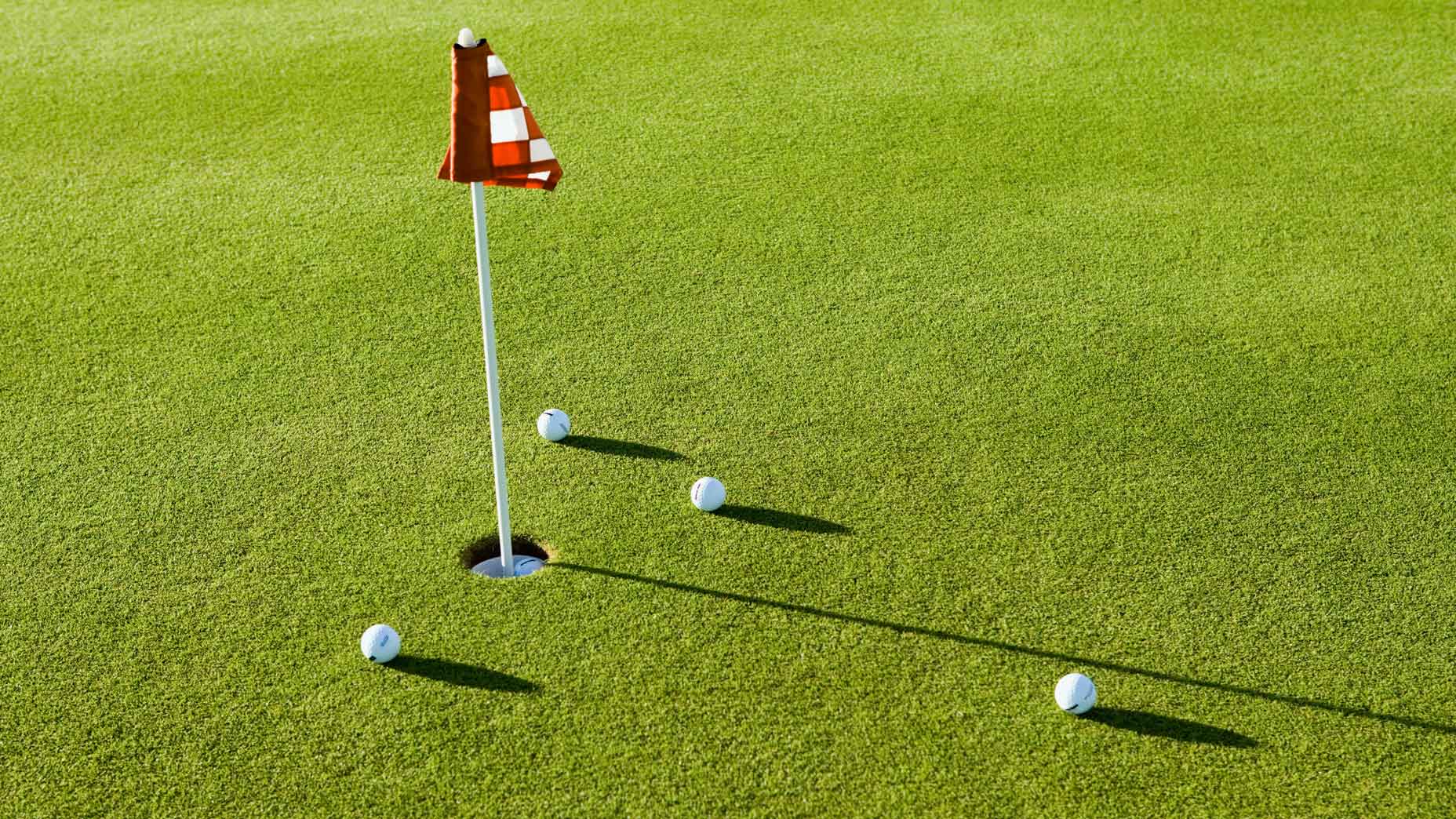Improve your putting with this simple 30-minute practice routine
- Share on Facebook
- Share on Twitter
- Share by Email

Practice time means having a plan if you want to get better, says Top 100 Teacher Brady Riggs.
Getty Images
InsideGOLF: +$140 Value
Just $39.99
Practice time means having a plan if you want to get better, says Top 100 Teacher Brady Riggs.
Getty Images
When you head to the putting green for a pre-round warm-up or a practice session, do you have a plan?
Hand up: I pretty much never do. Usually, if I manage to get to the course in time to roll some putts, I just drop a few haphazardly around the putting green, and whack away until it’s time to head to the tee. But, according to GOLF Top 100 Teacher Brady Riggs, practicing — and even simply warming up this way — is almost a total waste of time. Riggs says it’s important for his students to have a purpose for everything.
“Lots of times, if they’re putting, they take three balls out of their bag — because that’s how many come in the box, in the sleeve,” he said. “They go to the green, and the holes are 20 feet apart, and their make rate is 15 percent. They’re never going to make them and they’re never going to three-putt. It’s pointless.”
Riggs’ words were pretty convicting to me, so I asked him how an ideal session on the putting green would look.
“If you had 30 minutes, that’s plenty of time to putt,” he said.
Ready to change your ways with me? Check out Riggs’ tips for dialing in your putting in 30 minutes below.
Focus on alignment
“Start out with something that helps you start the ball on the line,” Riggs said. “Whether that’s a putting plate or a mirror or something else, you want to be checking your mechanics so you can start the ball online.”

View Product
Focus on speed
“Once you’re consistent with your set up, then it should go into something that has to do with working on your speed,” Riggs said. “And there’s all kinds of cool combines and drills that you can do to work on your speed.” (Click here for some ideas.)
Focus on short-range putts
“Next, work on three-footers, six-footers and nine-footers, which are very easy for players to work on, because it’s one step for three feet, two for six and three for nine,” Riggs said. “And those can be completely competitive in full routine. If you use a line on the ball, you should be using the line on your ball for these. You want to keep track of that because you want to feel stress. Practice is no good if it’s just relaxing, you want to actually have a little bit of, ‘Man, I really want to make this because I want to get to 10 on this drill,’ or whatever that is.”
Even if you don’t work on lag putting specifically during this time, dialing in these other three areas will naturally improve that part of your game too, Riggs said.
“That 30 minutes is easy to use, where you do some technical work on alignment and speed, and then you work on making the shorter putts,” he said. “That feedback is great because if you did that a lot, you’d get really good at starting the ball online, at working on your speed and at making the putts that count, which is nine feet and in.”
Give Riggs’ advice a try to get your 2024 game off to the right start. And for more tips from Riggs, click here.

Golf.com Editor
As a four-year member of Columbia’s inaugural class of female varsity golfers, Jessica can out-birdie everyone on the masthead. She can out-hustle them in the office, too, where she’s primarily responsible for producing both print and online features, and overseeing major special projects, such as GOLF’s inaugural Style Issue, which debuted in February 2018. Her original interview series, “A Round With,” debuted in November of 2015, and appeared in both in the magazine and in video form on GOLF.com.